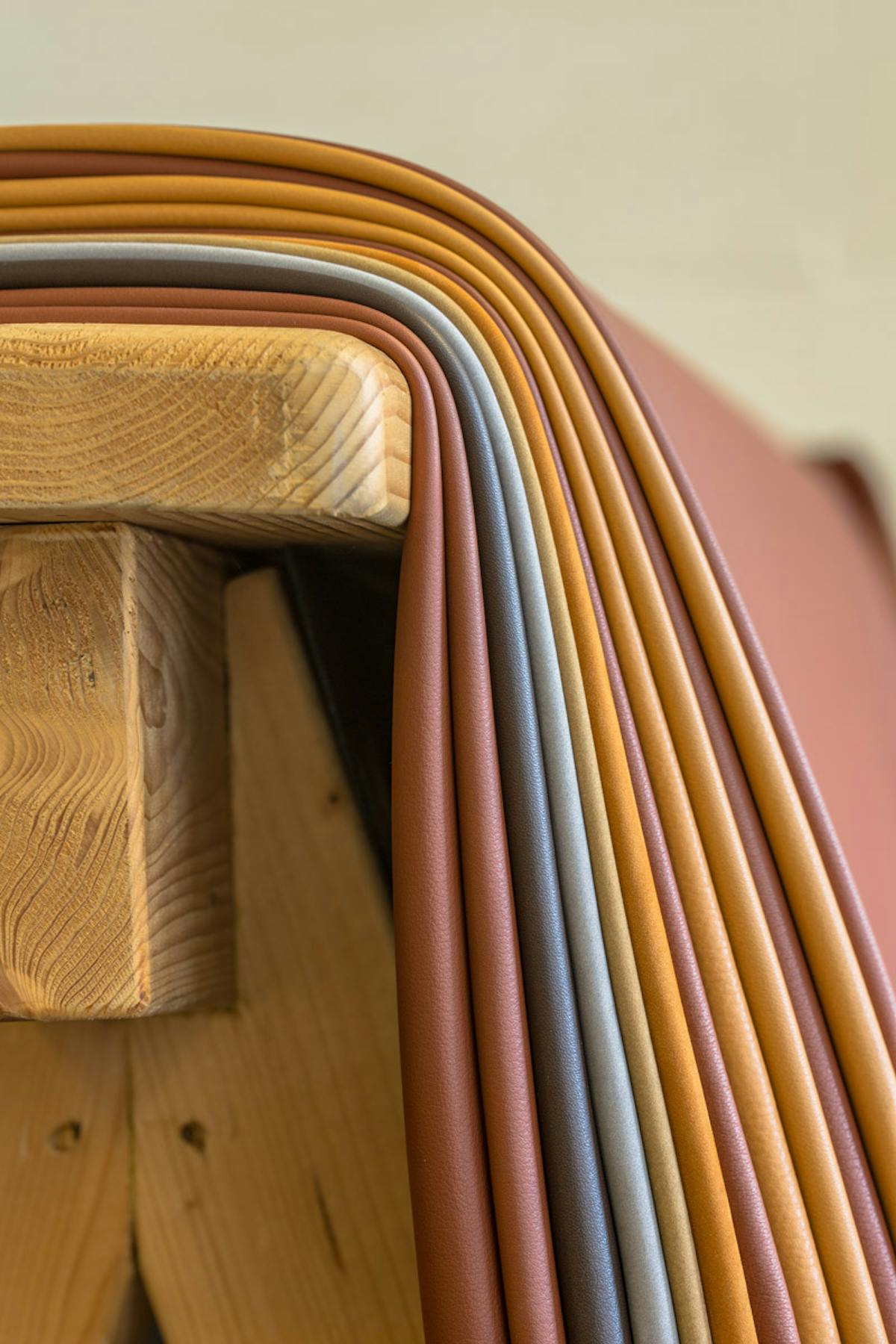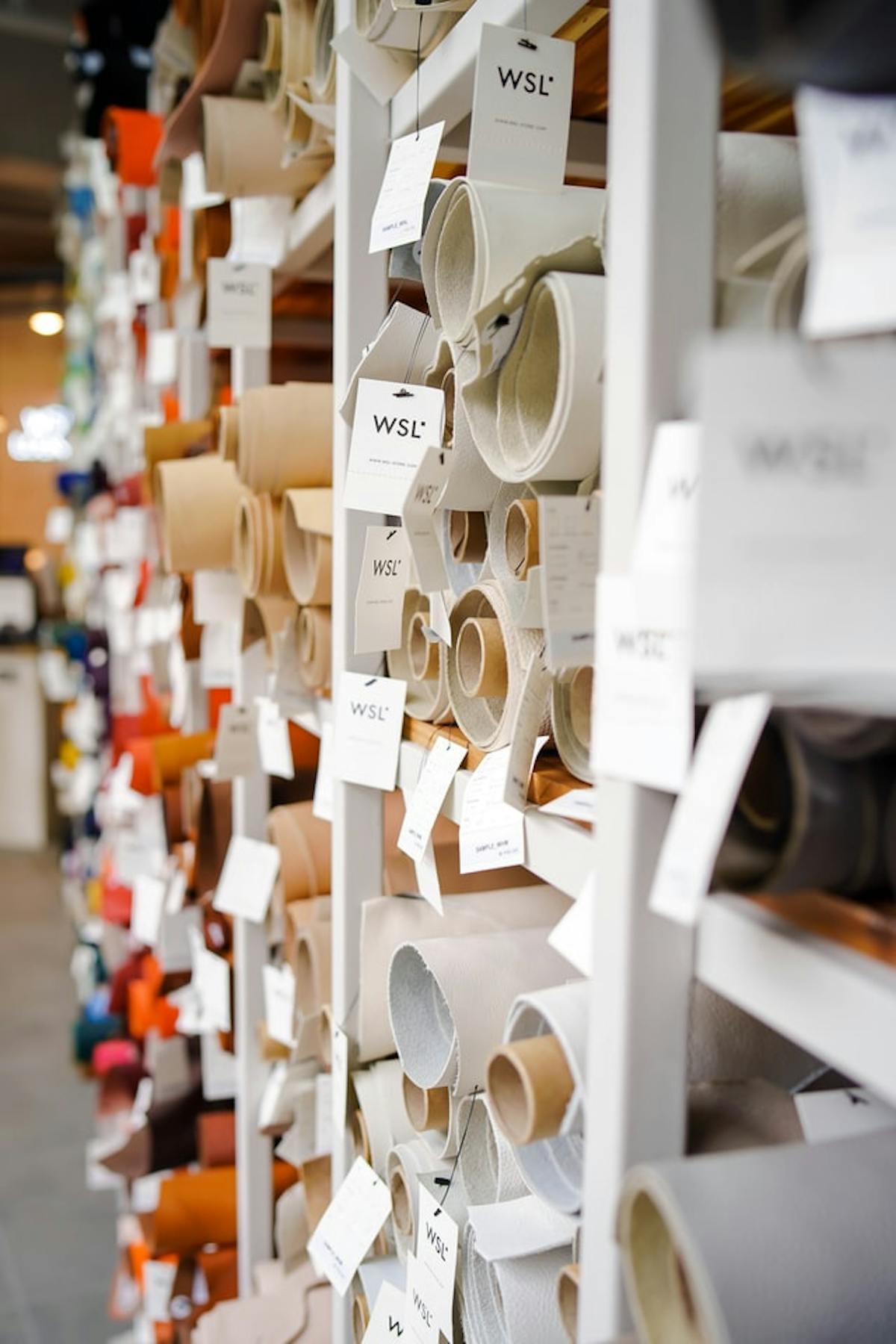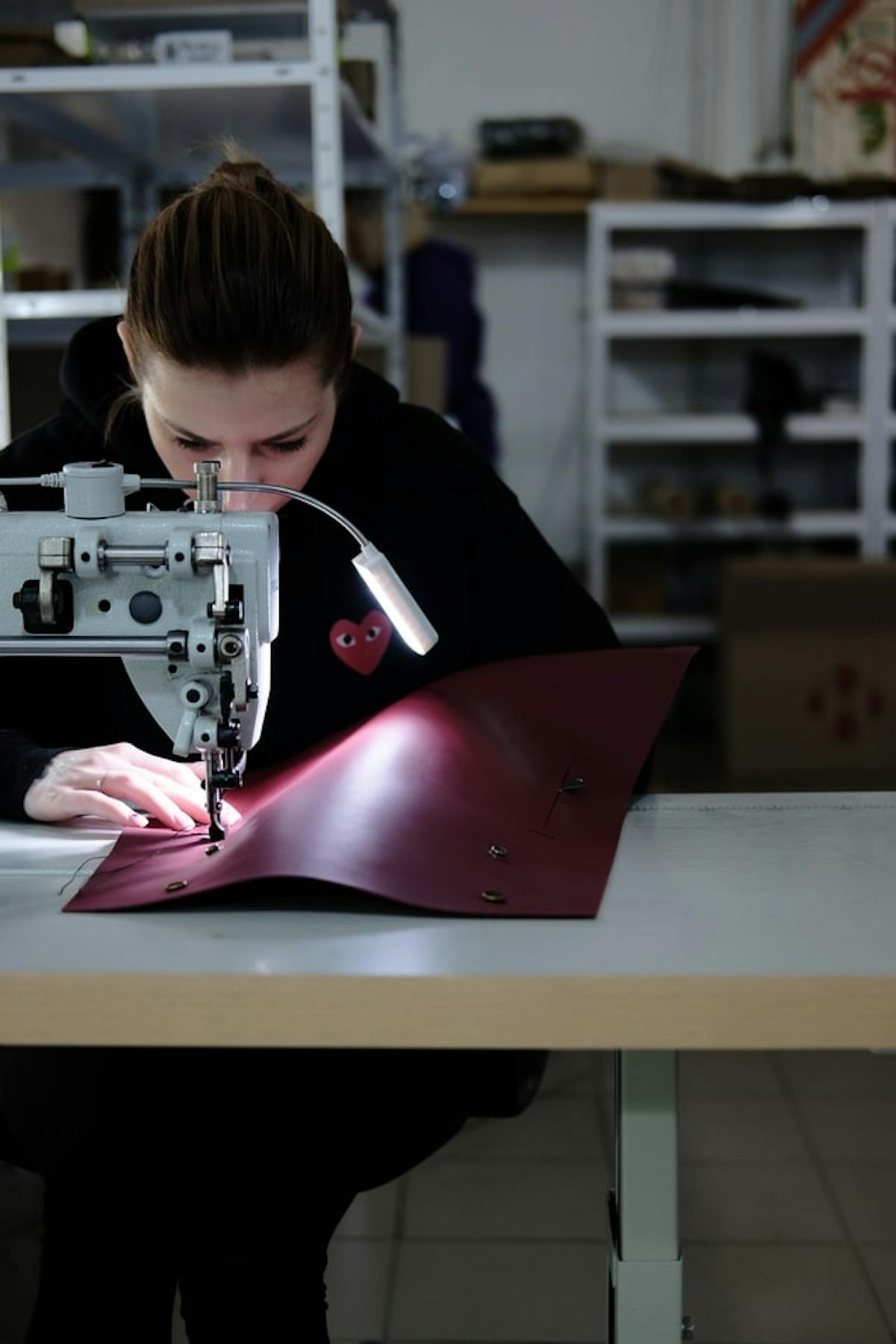Vinyl fabric is a popular option for anything from designer jackets to upholstery. Traditionally vinyl is a shorthand term for PVC, a type of plastic made using ethylene and chlorine, and is produced in flat sheets for sewing. Today the word vinyl is used as a catch-all to mean any number of non-woven fabrics with a plastic-like quality to them.
What Is Vinyl Fabric Used For?
Vinyl fabric is a great option for Halloween costumes, home decor, clothing, and accessories and can be found in endless weights and finishes. From futuristic, out-of-this-world colours with iridescent finishes, to classic leather lookalikes, sewing with this fabric is fun and rewarding, but not without its hardships. We go through a few top tips for working with vinyl to help you stay on the right track.

Tips On Choosing A Vinyl Fabric For Your Project:
Keep your vinyl flat or rolled only
No matter what type of vinyl you choose, make sure to get one that has been stored flat or rolled only. Creases leave permanent wrinkles and an uneven surface which will be impossible to remove from folded pieces. The same goes for storing leftover vinyl from your projects. Try to keep it flat if you can.
Know what vinyl you are looking for
When people refer to vinyl, they can often mean other types of vinyl-like fabrics and not just the PVC based one. Pleather (imitation leather), coated fabrics, and laminated fabrics are commonly used in place of actual vinyl. Some of these may use PVC as the basis, however, others can be made of different materials, such as plants, to create eco alternatives to artificial plastics.
Match the weight of your vinyl and the thread
If you are using a heavyweight vinyl material, choose a heavyweight thread to match. Sometimes you can find thread that is designed for leather and will work perfectly well for vinyl. If not, many brands have thicker options sold as topstitching thread which will work fine.

Tips On Preparing Vinyl Fabrics For Your Project:
Use a roller cutter
A rotary cutter works superbly with vinyl fabrics and will get the job done much faster than with regular shears. Just be sure to start with a sharp blade as it will quickly dull.
Avoid using pins with vinyl fabric
Pins will leave permanent holes in your vinyl, so use an alternative such as pattern weights or binder clips to keep the fabric from moving around.
Choose a simple sewing pattern for vinyl projects
Regardless of whether you are making something for the home or a garment, simple patterns with fewer sewing lines will give you the best finish. Choose something without darts, gathers, and small details to avoid bulky seams and excess fabric.

Tips On Sewing Vinyl Fabric At Home:
Use a specialised sewing machine foot for your vinyl fabric
A walking foot is the best option as it pushes the top layer of vinyl under the foot at the same time as the bottom layer. This is particularly good for vinyl as it can become sticky under pressure, making it harder to guide the fabric through the sewing machine. If you don’t own a walking foot, you can easily use a non-stick, Teflon foot or a roller foot.
Opt for a longer stitch length
Because vinyl is a non-woven fabric, it is prone to tearing around weak spots like pin and needle holes. Spacing your stitches further apart will give it less chance of tearing down the entire seam, and your sewing machine will have an easier time with making fewer stitches.
Keep seam allowances flat with a dab of glue
If you are sewing with heavy vinyl or fabric that resembles leather, glue can be a great way to keep seam allowances open and flat without the need for ironing. Choose a fabric glue designed for this purpose, and after applying, keep pressure on the seams with a flat surface such as a pattern weight or book until the glue has dried.
Caring for vinyl items can be a little different than usual, so make sure to add a custom laundry label to your projects to keep them in their best shape for longer. Please let us know if we missed your must-do tips for sewing with vinyl on Facebook or Twitter, and we can add them to the list!













